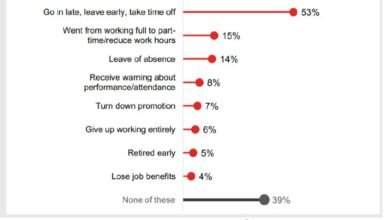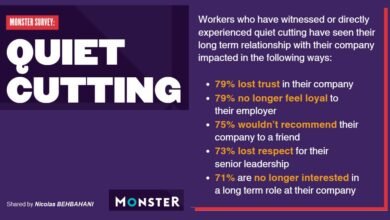
By | Charlie Fletcher
Experts say that “Workers give their companies an F in terms of supporting mental health. Managers are equally grim: they rate these efforts with a C.” This is disappointing considering how many employees are living with mental health challenges.
Factor in remote employees, and you’ll see a considerable gap between where companies are and where they need to be regarding employee wellness in the workplace.
Company leaders, managers, human resource personnel, and others tasked with employee development often fail to support their remote employees adequately. As a result, employee workflows are disrupted, productivity is suffering, and customers are getting the short end of the stick.
Luckily, there are several ways to support your employees’ physical, mental, and emotional well-being as they work in a virtual office setting.
Before we get into four ideas for prioritizing well-being in virtual offices, let’s discuss why looking after your hybrid and fully-remote employees is essential.
Why It’s Important to Prioritize Employee Well-Being in Virtual Offices
First, it’s crucial to prioritize employee well-being in virtual offices because they’re just as integral to your company’s success. Your employees working outside of the office isn’t an excuse to neglect their well-being.
Also, employees working a fully-remote or hybrid schedule experience burnout often. They have trouble clocking out at the end of the day and end up in isolation and loneliness. Increased screen time, not taking regular breaks, and physical activity prompt burnout as well.
As a result, these employees are less productive, creative, and collaborative. Prioritization can help mitigate burnout in your remote employees, boost engagement, and lead to top-tier production.
Ready to better prioritize well-being in your virtual office? Read on for four ideas to do so effectively.
Four Ideas for Prioritizing Well-Being in Virtual Offices
Here are four ideas to implement today that support the well-being of employees in your virtual office:
Ensure your workplace culture welcomes employee well-being conversations
After opening up about their mental health challenges, no one wants to be called “crazy.” Nor does someone want to feel like they can’t be honest about the emotional or spiritual support they need to succeed in the workplace.
Instead, create a company culture that welcomes conversations about employee well-being, mental health, and emotional concerns. Create a safe space for employees to explore bettering their holistic health.
Any conversation about employee well-being should be inherently positive. Give employees the option to talk about well-being virtually or in-person with you. Have genuine chats about how you can amp up your support and resources for employees in virtual offices.
Next, soup up your employee benefits package.
Soup up your employee benefits package
Don’t just converse with your remote employees about how to support their well-being better. Actually do something about it—soup up your employee benefits package.
For instance, instead of expecting your employees to keep producing despite work-related stress, consider offering stress leave in your benefits package. You can require employees to sit down with a mental health professional and HR to discuss their stress-related symptoms to determine their eligibility and how long they’ll need to take off to recover.
Your benefits package could also include the following to cover employee well-being in virtual offices:
- Comprehensive health insurance with partial or complete coverage of mental health services like therapy
- Free or discounted virtual or in-person counseling sessions
- Home visits from medical and mental health professionals
- Stipends for home office equipment that supports holistic health
- Fully-covered or discounted gym memberships
- Access to yoga, meditation, and other mindfulness activities
- Points of contact for employee well-being issues
- Adequate sick/personal days and vacation time
- Virtual events and activities that support social connection with coworkers
- Short-term and long-term disability options
Hiring leaders who value holistic health and well-being can also ensure you’re prioritizing employee well-being in your virtual office.
Hire leaders who value holistic health and well-being
Supporting employee well-being starts at the top. In other words, if you hire leaders who value work over wellness, they’ll treat their employees accordingly. Meaning they’ll expect them to work long hours, through lunches, and to “suck up” their physical, mental, or emotional health issues for the sake of production.
Instead of hiring leaders like this, bring managers on board that understand the unique needs of remote workers, value holistic health and well-being, and are transparent about navigating mental health challenges themselves.
Lastly, allow your employees to pick their schedules and personalize their job responsibilities.
Allow employees to pick their schedules and personalize their responsibilities
Work isn’t and shouldn’t be your employees’ entire life. Helping them have a full personal life is just as crucial to their well-being as a productive professional life. When employees work a hybrid or fully-remote schedule, setting boundaries for when work starts and stops can be challenging.
Don’t be the reason your employees lose people and things in their personal lives because they’re giving all they have to the job. Instead, develop a personal relationship with each employee. Find out everything you can about them and offer job responsibilities and a schedule that fits their family obligations, values, and future goals.
All in all, when an employee’s job responsibilities and schedule allow them to have a better work-life balance, their well-being benefits, and so does your business.
Conclusion
Promoting employee well-being in virtual offices doesn’t have to be complicated. Start by ensuring your workplace culture welcomes employee well-being conversations. Next, soup up your employee benefits package with resources and support unique to remote workers. Then, include employees when determining work schedules and responsibilities. Finally, hire leaders that value holistic health and well-being.






